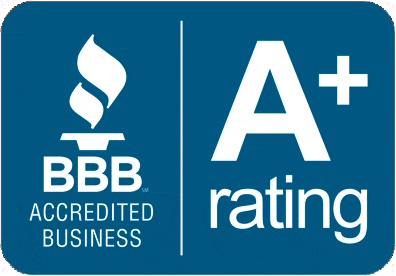How St. Louis Law Firms Migrate Case Files Without Violating Privilege
by Jon Lober | NOC Technology
How Do St. Louis Law Firms with 20-50 Attorneys Migrate Case Files to New Practice Management Software Without Violating Attorney-Client Privilege?
Law firms with 20-50 attorneys must use Business Associate Agreements, maintain encrypted chain of custody documentation, and verify conflict database integrity during migration. Typical migrations from legacy systems like PCLaw or Time Matters take
6-12 weeks with costs ranging from
$25,000-$75,000 depending on data volume and system complexity.
What Missouri Bar Rules Apply to Law Firm Data Migration and Third-Party Access?
Missouri Bar Rule 4-1.6 and ABA Formal Opinion 477R require specific safeguards when IT vendors access client data during migration. Under Missouri's professional conduct rules, attorneys must obtain informed consent from clients before allowing third-party access to confidential information, unless the data remains encrypted and inaccessible to the vendor throughout the migration process.
The Missouri Bar's interpretation aligns with federal requirements for protecting sensitive data. Firms must implement reasonable safeguards including:
- Business Associate Agreements (BAAs) that explicitly prohibit vendor access to unencrypted client data
- Written migration protocols documenting each step of data handling
- Audit trails showing who accessed what data and when
- Encryption at rest and in transit using AES-256 or stronger
- Vendor background checks for any personnel handling migration
Missouri ethics opinions also require firms to maintain competence in technology used to protect client information. This means partners must understand the migration process well enough to supervise it properly, not just delegate to IT staff. Violations can result in disciplinary action ranging from private reprimands to suspension, with penalties increasing if client data is actually compromised.
Read More: Navigating Missouri and Federal Cybersecurity Regulations
How Do You Maintain Chain of Custody for Client Files During System Migration?
Chain of custody requires cryptographic hashing, dual-control procedures, and timestamped documentation at every transfer point. For a 30-attorney firm migrating 50,000+ case files, this typically means implementing SHA-256 checksums before export, after transfer, and post-import to verify no data alteration occurred.
| Migration Phase | Required Documentation | Verification Method | Typical Duration |
|---|---|---|---|
| Pre-Migration Audit | Full database inventory, file counts, metadata catalog | SQL queries, automated scanning | 3-5 days |
| Data Export | Export logs, hash values, encryption keys | SHA-256 checksums | 1-2 days |
| Secure Transfer | Transfer protocols, access logs, network paths | Encrypted tunnel verification | 4-8 hours |
| Data Import | Import logs, error reports, mapping documentation | Row count validation | 2-3 days |
| Post-Migration Verification | Comparison reports, user acceptance testing | Sample file review (10% minimum) | 5-7 days |
The dual-control requirement means two authorized individuals must be present (physically or via recorded screen share) during critical operations like database exports or encryption key generation. This prevents any single person from having unmonitored access to the entire client database.
Firms should maintain these chain of custody records for at least seven years after migration completion, as this exceeds most malpractice statute of limitations periods and satisfies Missouri's document retention requirements for attorney trust account records, which courts may view as analogous.
What's the Safest Way to Migrate Conflict Check Databases Without Data Corruption?
Conflict databases require field-level mapping validation and parallel run testing for 30-60 days to prevent ethics violations from missed conflicts. Unlike general case data, conflict check information must maintain perfect accuracy since a single corrupted entry could lead to inadvertent representation of adverse parties, triggering Missouri Bar Rule 4-1.7 violations.
The migration process for conflict databases follows a specific sequence:
- Extract conflict data separately from main case files (typically 2-4GB for a 30-attorney firm)
- Map all relationship fields including maiden names, DBAs, subsidiary companies
- Run test imports on a sandbox system with known conflict scenarios
- Conduct parallel operations checking both old and new systems for 30-60 days
- Verify phonetic matching algorithms work correctly in the new system
Common corruption points include special characters in names (apostrophes, hyphens), date format inconsistencies between systems, and relationship mapping failures when moving from flat-file databases like PCLaw to relational systems like Clio or PracticePanther.
| Source System | Common Issues | Testing Requirements | Remediation Time |
|---|---|---|---|
| PCLaw | ASCII character limits, truncated names | 500+ test conflicts | 3-5 days |
| Time Matters | Custom field mapping, relationship links | Full relationship tree validation | 5-7 days |
| Amicus Attorney | Date format conversions, duplicate detection | Historical conflict re-runs | 2-3 days |
| Practice Master | Proprietary data structures | Manual verification sampling | 7-10 days |
How Long Does Practice Management Software Migration Take for a 30-Attorney Firm?
A complete migration for a 30-attorney firm typically takes 6-12 weeks from contract signing to full cut-over, with 4-6 weeks of active technical work. The timeline varies based on source system complexity, data volume (usually 200-500GB for this size firm), and whether you're migrating during active business operations or over a holiday period.
| Week | Phase | Key Activities | Attorney Hours Required |
|---|---|---|---|
| 1-2 | Discovery & Planning | Data audit, requirements gathering, BAA execution | 20-30 hours (partners) |
| 3-4 | Environment Setup | New system configuration, user account creation | 5-10 hours (IT liaison) |
| 5-6 | Test Migration | Sample data transfer, validation testing | 15-20 hours (practice leads) |
| 7-8 | Full Data Migration | Complete transfer, conflict database validation | Minimal (weekend work) |
| 9-10 | Parallel Running | Both systems active, issue resolution | 40-60 hours (all staff) |
| 11-12 | Cutover & Training | Final switch, intensive user training | 80-120 hours (all attorneys) |
Critical factors that extend timelines include:
- Custom report migration - recreating 50+ custom reports adds 2-3 weeks
- Document management integration - linking to iManage or NetDocuments adds 1-2 weeks
- Accounting reconciliation - trust account balancing can add 1 week if discrepancies found
- Multi-office coordination - firms with satellite offices need 20-30% more time
Firms should plan for 20% productivity loss during weeks 9-12 as attorneys adapt to the new system. Smart firms schedule migrations during traditionally slower periods (late July, late December) to minimize client impact.
Read More: How productivity losses add up
What Should St. Louis Law Firms Include in Their Data Migration Agreement with IT Vendors?
Migration agreements must include liability caps of at least $5 million, 24-hour breach notification, and specific Missouri Bar compliance warranties. Standard IT service agreements rarely provide adequate protection for the unique risks of legal data migration, requiring substantial modifications to address attorney-client privilege and professional liability concerns.
Essential contract provisions for law firm migrations include:
- Errors & Omissions coverage minimum $5 million specifically covering data migration services
- Breach notification within 24 hours to enable Bar reporting compliance
- Data destruction certification within 30 days of project completion
- Subcontractor restrictions prohibiting offshore data processing
- Performance bonds for projects exceeding $50,000
- Right to audit vendor security practices with 48-hour notice
| Contract Element | Standard IT Agreement | Law Firm Requirement | Negotiation Priority |
|---|---|---|---|
| Liability Cap | $100K-500K | $5M minimum | Critical |
| Breach Notification | 72 hours | 24 hours | Critical |
| Data Retention | 90 days | 30 days maximum | High |
| Jurisdiction | Vendor's state | Missouri courts | High |
| Arbitration Clause | Mandatory | Optional/removed | Medium |
| Background Checks | Not specified | Required annually | Medium |
St. Louis firms should also require vendors to maintain cyber liability insurance with specific coverage for professional services firms. Many general cyber policies exclude legal sector claims due to the elevated risk profile.
The agreement should specify that all work occurs during business hours unless otherwise approved, allowing firm supervision. Weekend or after-hours work should trigger additional documentation requirements and potentially higher fees to cover partner oversight time.
Read More: IT Legislation and Compliance
What Are the Hidden Costs Beyond the Migration Quote?
Hidden costs typically add 30-50% to the base migration quote, with training, customization, and parallel running being the largest unexpected expenses. For a 30-attorney firm quoted $40,000 for migration services, actual total costs often reach $55,000-65,000 when including all necessary components.
Frequently overlooked budget items include:
- Parallel system licensing ($3,000-5,000) - running both systems for 30-60 days
- Custom report development ($5,000-15,000) - recreating firm-specific reports
- Training and lost productivity ($8,000-12,000) - based on 4 hours per attorney at $300/hour
- Data cleanup ($2,000-8,000) - fixing inconsistencies discovered during migration
- Third-party integrations ($3,000-7,000) - connecting to QuickBooks, document management
- Post-migration support ($2,000-4,000) - enhanced help desk coverage for 60 days
Missouri firms must also budget for compliance documentation costs. Creating and maintaining the audit trail required by ethics rules typically requires 20-40 hours of paralegal time at $75-125/hour, adding $2,000-4,000 to the project.
Emergency rollback procedures, while rarely needed, should be priced into the contract. A full rollback after partial migration can cost 40-60% of the original migration fee and must be completed within 72 hours to avoid significant business disruption. Firms should maintain their legacy system licenses for at least 90 days post-migration as insurance against catastrophic failure.
Next Steps for Your Firm's Migration Planning
Start with a data audit and vendor security assessment 6 months before your intended migration date. This provides adequate time for cleanup, vendor selection, and securing partner buy-in without rushing critical decisions that could compromise client data or firm operations.
Immediate action items for firms considering migration:
- Inventory your current data - document case counts, storage volumes, and custom workflows
- Review your malpractice insurance - confirm coverage for data migration activities
- Interview 3-4 qualified vendors - focus on those with Missouri law firm experience
- Create a migration committee - include partners, IT staff, and power users
- Audit your current contracts - identify early termination fees and data export rights
- Document critical dependencies - list all integrated systems and custom reports
Contact your malpractice carrier before signing any migration agreement. Some carriers offer reduced premiums for firms using approved practice management systems or following specific migration protocols. Others may require notification before major system changes to maintain coverage.
Consider engaging a Missouri-based IT consultant familiar with legal sector requirements to oversee vendor selection and contract negotiation. The $3,000-5,000 investment typically pays for itself through better contract terms and avoided pitfalls.
About NOC Technology: Supporting St. Louis professional services firms since 2005, NOC Technology maintains Business Associate Agreements with healthcare and legal clients requiring enhanced data protection. With 15-second response times and local technicians, we understand the unique compliance requirements Missouri firms face during critical IT transitions.




